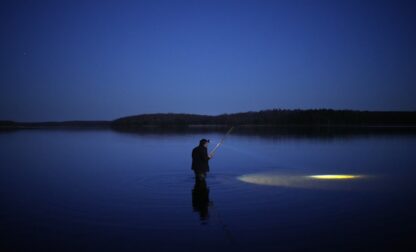ERIC TUCKER, LINDSAY WHITEHURST, CLAUDIA LAURER, ALANNA DURKIN RICHER, JAKE BLEIBERG, JAMIE STENGLE, ACACIA CORONADO AND ERIC GAY
A highly anticipated Justice Department report into the Robb Elementary School shooting promised to address a question that continues to stoke outrage nearly two years later: Why did Texas police wait more than an hour to confront the gunman inside a fourth-grade classroom?
How AP beat competitors in reporting the findings was a showcase of collaboration and maximizing reach and expertise. Nimble teamwork across the U.S. — and across all formats — pulled it off with skillful writing, sharp takeaways and compelling images and video as families in Uvalde revisited the failures that surrounded one of the nation’s deadliest school attacks.
Two teams of reporters were assigned to the only locations where the Justice Department was releasing embargoed copies of the report: “Uvalde and Washington.” While reporter Acacia Coronado obtained one copy in Texas, Eric Tucker and Lindsay Whitehurst got the report in Washington and quickly began digesting the key findings and dropping publishable feeds into Slack. When the embargo broke hours earlier than expected — and with no digital copy yet available — Whitehurst rushed a copy of the voluminous report back to the bureau so that chunks of pages could be fed into a scanner and uploaded for other reporters to read.
In short order, a team of AP journalists in Texas and beyond divvied up sections of the report and compiled running summaries of the most significant findings. As Tucker deftly weaved together the feeds for the mainbar, Claudia Lauer and Alanna Durkin Richer quickly assembled a separate story that clearly explained to audiences the multiple failures by law enforcement. In Dallas, Jamie Stengle rounded out the sweeping text coverage with a timeline of the attack and the many missteps by police. On the ground in Uvalde, Coronado interviewed family members of the victims on camera while photojournalist Eric Gay captured their anguish and anger over the report’s findings. Dallas reporter Jake Bleiberg, who has covered the fallout in Uvalde since the 2022 attack, combed the report for new details and anchored a next-day story about families renewing demands for police to face criminal charges.
That story put AP in position to react quickly when, barely 24 hours after the Justice Department report was made public, a grand jury in Uvalde was seated to investigate the shooting. AP was out ahead of competitors with both its alert and urgent series summarizing the key findings. The mainbar was AP’s top story for Jan. 18 with more than 106,000 page views.



